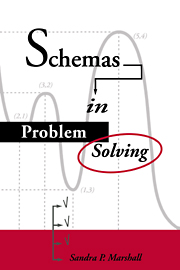II - Schemas and instruction
Published online by Cambridge University Press: 22 October 2009
Summary
It is difficult to say where schema theory should have its greatest instructional impact. Certainly the organization and delivery of instruction are prime candidates. Under schema theory, the student is given the dynamic role of active learner rather than passive recipient. It is up to him or her to take incoming new information and attach it meaningfully to previously stored knowledge. The teacher in this scenario becomes the facilitator, making sure the new information is pertinent, pointing out explicitly its links to other, known information, and providing understandable examples to help the student make the appropriate connections. I have elsewhere likened the teacher in schema-based instruction to a tour guide whose responsibility is to help the student learn to appreciate a new environment by pointing out the major landmarks and telling interesting stories about it (Marshall 1993a). On a tour of a new city, the guide is not bound to a fixed route but may explore any number of different aspects of the environment, stopping longer than usual when the tourists want extra time to experience some feature. The teacher as tour guide should be flexible and sensitive to ways of highlighting specific connections that draw on students' own interests and prior experience.
Adopting schema theory as the basis of instruction almost certainly necessitates a complete restructuring of the curriculum. It also raises questions about the nature of learning. In this part and the next, I address these two issues.
Information
- Type
- Chapter
- Information
- Schemas in Problem Solving , pp. 111 - 112Publisher: Cambridge University PressPrint publication year: 1995
